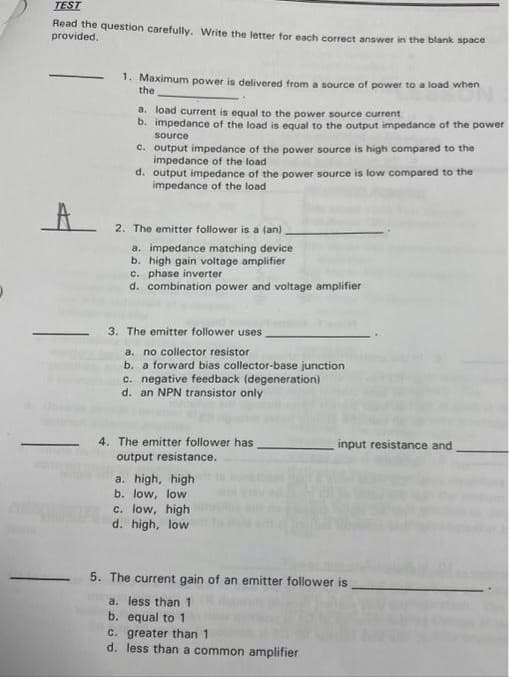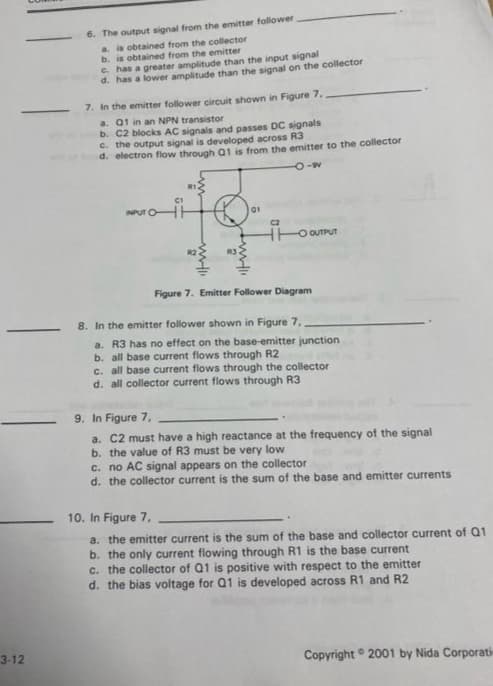A 1. Maximum power is delivered from a source of power to a load when the a. load current is equal to the power source current b. impedance of the load is equal to the output impedance of the powes source c. output impedance of the power source is high compared to the impedance of the load d. output impedance of the power source is low compared to the impedance of the load 2. The emitter follower is a (an). a. impedance matching device b. high gain voltage amplifier c. phase inverter d. combination power and voltage amplifier 3. The emitter follower uses a. no collector resistor. b. a forward bias collector-base junction c. negative feedback (degeneration) d. an NPN transistor only
Power Amplifier
The power amplifier is an electronic amplifier designed to maximize the signal strength of a given input. The input signal strength is enhanced to a high enough level to drive output devices such as speakers, headphones, RF (Radio frequency) transmitters, etc. Unlike voltage / current amplifiers, the power amplifier is designed to drive core loads directly and is used as a storage block in the amplifier series.
Maximum Efficiency Criterion
In every field of engineering, there is a tremendous use of the machine and all those machines are equipped for their popular work efficiency so it very much important for operation engineers to monitor the efficiency of the machine, planning engineers to check out the efficiency of the machine before installing the machine and design engineers to design machine for higher efficiency than and then the utility will procure their products that will ultimately lead to profit and loss of the company. It indicates the importance of efficiency right from the initial stage as manufacturing units, intermediate stage as planning coordinators, and end-users stage as a utility.


Step by step
Solved in 2 steps with 1 images


